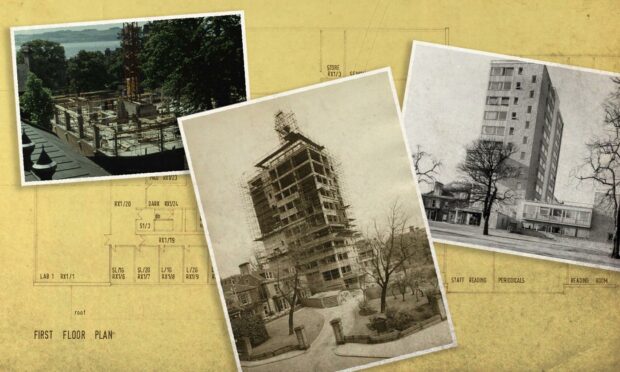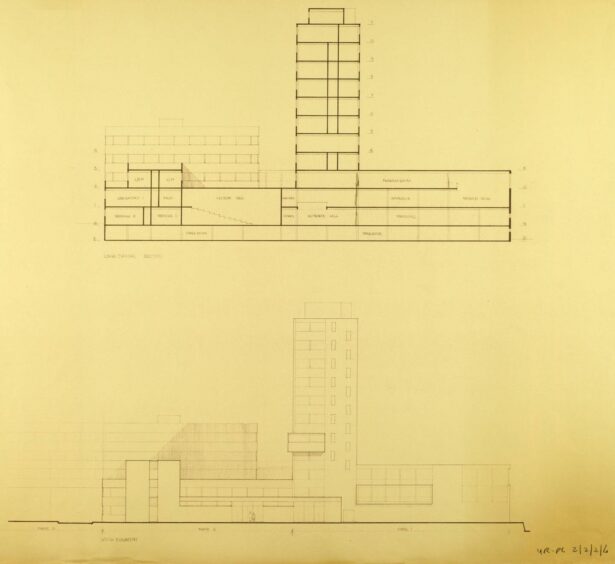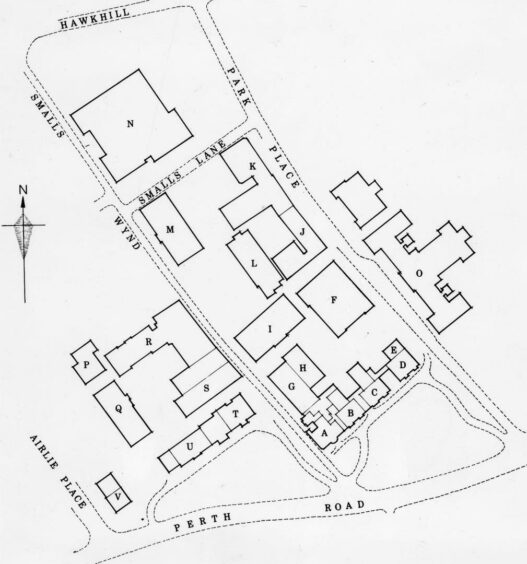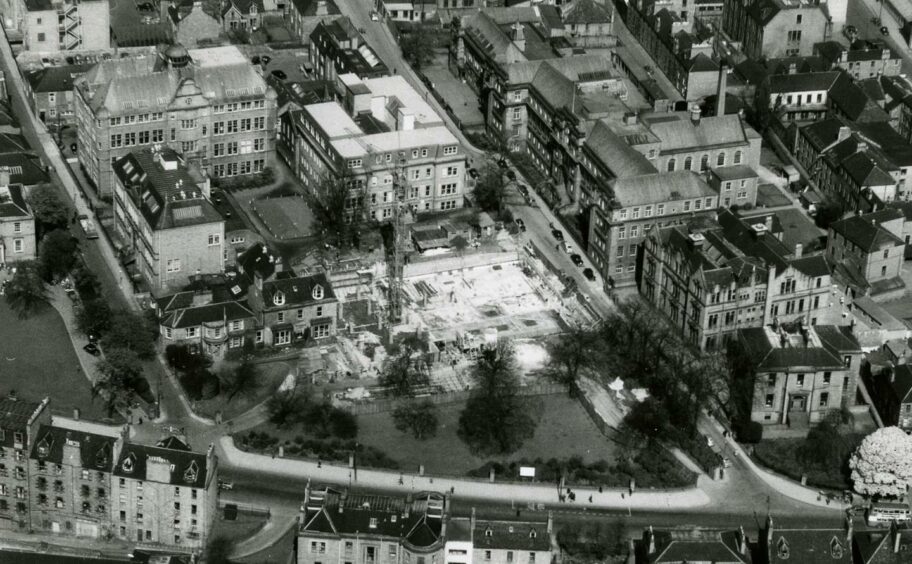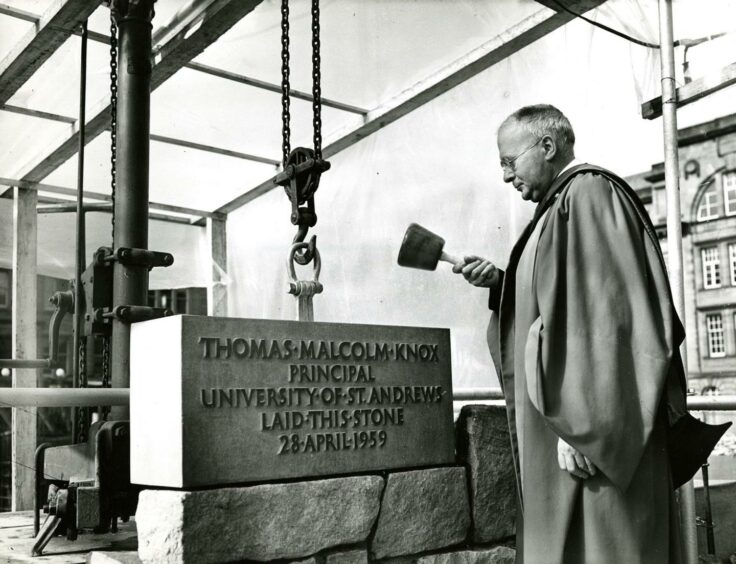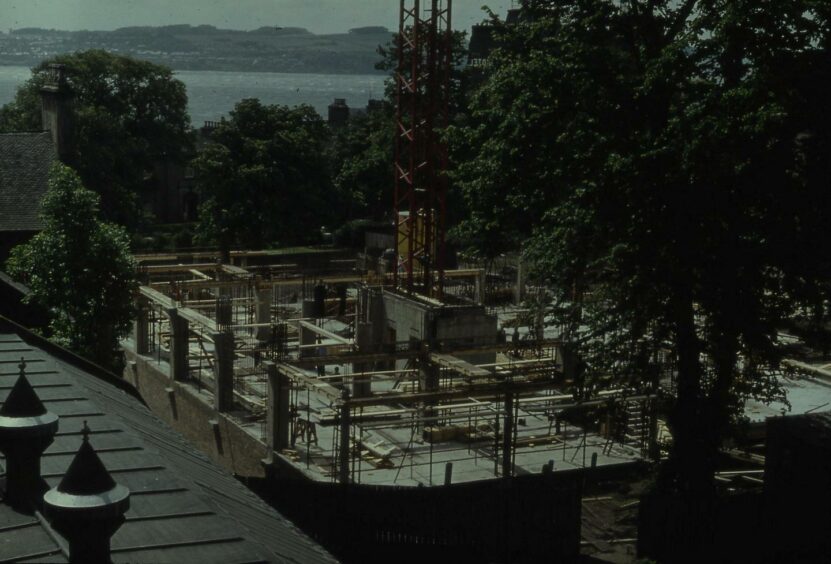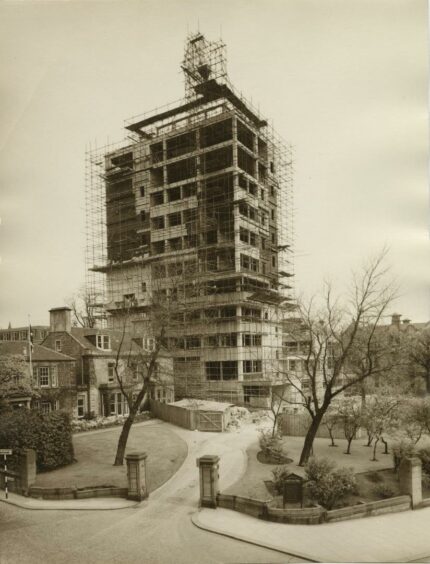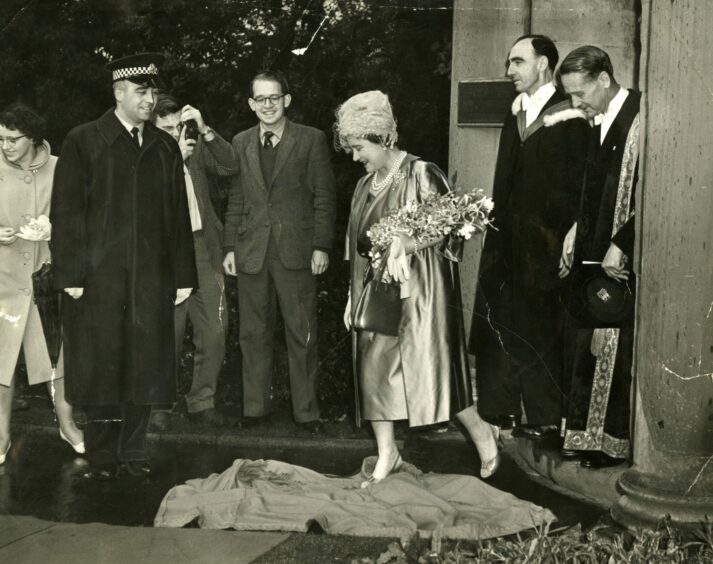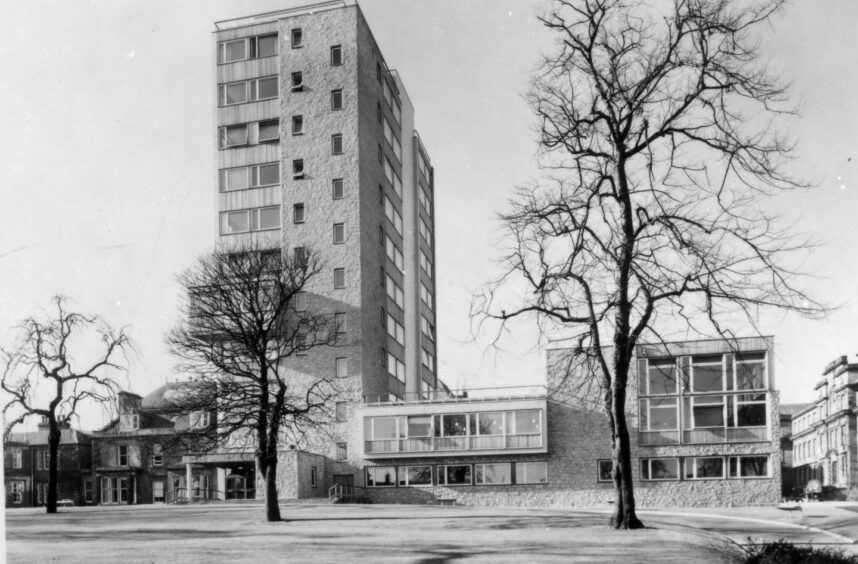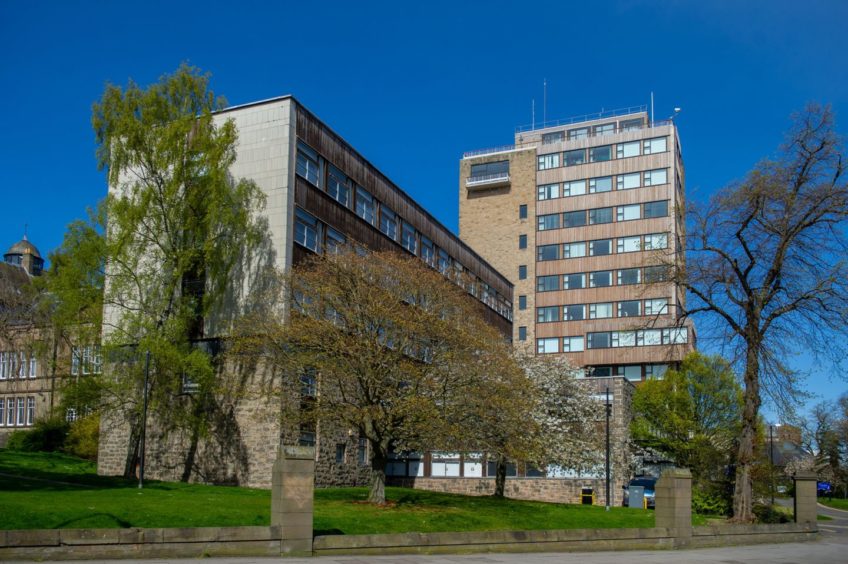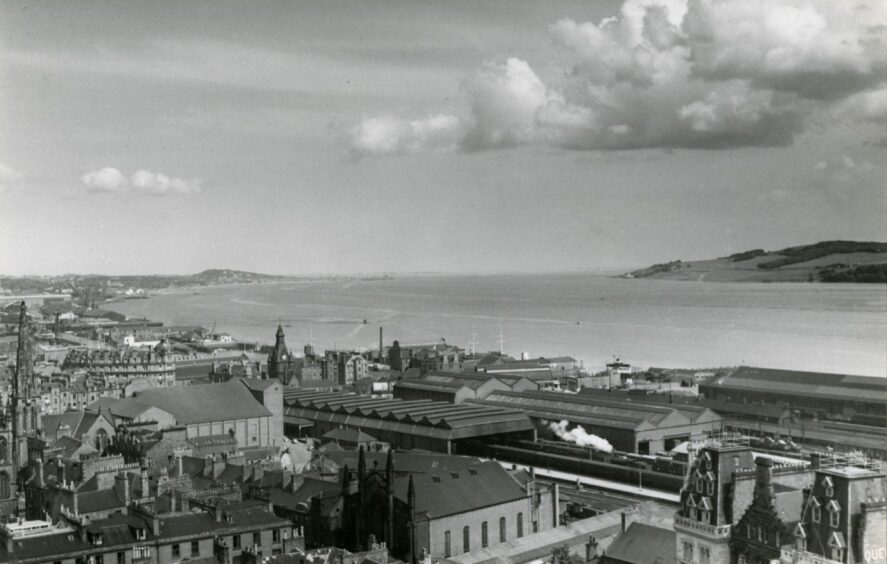These architectural designs and rare images show how the Tower Building rose to become a Dundee landmark.
From these sketches came the 10-storey tower of what was then Queen’s College which was designed by Professor Robert Matthew of Edinburgh.
The building cost some £500,000 to construct and sprung up at the start of the 1960s as student numbers rose by over 100% in a decade.
Dundee’s hard road to learning started in 1882 when the city’s foremost female philanthropist Mary Ann Baxter and her cousin, John Boyd Baxter – two of the famous Baxter family, who made their money from the jute mills of the city – donated £140,000 to the creation of a college in Dundee.
There was no doubt that Dundee was badly in need of higher education where 58% of the working population were employed in its many jute mills.
The population rose from 6,000 in the late 18th century to more than 142,000 by the time the University College was born on the Nethergate.
Four Georgian villas were bought by the Baxter family for £35,000 and converted to house the 373 students that signed up that first year.
Amongst the early teachers in the college were a number of men who were to win international fame – Sir William Peterson, Sir Alfred Ewing, Sir D’Arcy Thompson, Sir Patrick Geddes and Sir William McCormick.
The institution was, for most of its early existence, linked by an ultimately unworkable agreement with St Andrews University which went on for 70 years.
The institutions were working towards separation rather than integration by the time it was renamed Queen’s College in 1953.
This change proved to be the start of a new era for university education in Dundee.
It was in 1954 that the university authorities decided that the time had come to replace the original simple premises “and to build a tower which might captivate the imagination of the public and make conspicuous the fact that Dundee was now the possessor of a modern and growing academic centre of which all the citizens could be proud”.
The building took two and a half years to complete from Professor Matthew’s design with work undertaken by Dundee firm Charles Gray (Builders) Ltd.
Sir Malcolm Knox, principal of St Andrews University, laid the foundation stone on April 28 1959.
He liked the design, but was concerned that Professor Matthew’s building might be unfairly criticised before it was completed.
Dr Kenneth Baxter from Dundee University’s archive services, said these fears were probably based on the fact that this was a modern building replacing the historic college buildings which many graduates and Dundonians remembered with fondness.
He said: “The plans for the 10-storey tower generated considerable excitement, partly because it was to be the tallest modern building in Dundee.
“The building was erected on the site of two of the four Georgian villas on the Nethergate which had been purchased in 1882 and converted to serve as the main building of what was then University College, Dundee, in time for its opening in 1883.
“It had long been felt that they were inadequate to serve as the principal buildings of the college and various schemes to enhance or replace them were proposed over the years.
“All of these had failed to come to fruition, but by the 1950s the need for better facilities for a growing college was becoming an acute problem.
“On September 5 1960, The Courier commented that the building was symbolic of the changing face and skyline of Dundee.
“It would also prove to be symbolic of the growth and transformation of Queen’s College and the expansion of university education in the city.”
Student numbers had increased from 446 in 1953 to 1,280 by the time that The Queen Mother opened the building on October 20 1961.
Dr Baxter said: “The Queen Mother got a very warm welcome from staff and students on the day of the opening.
“It was a wet day and in a display of chivalry an engineering student, Michael Steadman, laid down his red undergraduate gown to avoid her walking on the wet flagstones.
“While the incident had echoes of Sir Walter Raleigh’s covering a puddle with his cloak for Elizabeth I of England to walk on, its origins were rooted in more recent history.
“Dundee students had already emulated Raleigh in 1955.
“The Queen had visited the college on a day of heavy rain and three students had similarly lain their gowns on the ground for her to walk on.”
Steadman was aware of the incident which happened during a royal visit to Dundee and had positioned himself so he could replicate it.
The Master of Queen’s College, Professor Arthur Alexander Matheson borrowed an umbrella from a female student to further protect The Queen Mother.
In 1967 Queen’s College gained independence from St Andrews University and became the University of Dundee.
The Queen Mother became the university’s first Chancellor, both raising its profile and acting as a vote of confidence in the fledgling institution.
An extension was added to the west of the Tower in the 1960s, being occupied in 1968.
Its construction had resulted in the demolition of the remaining two houses that had made up the original 1880s main building.
Dr Baxter has a photograph which was taken from the Tower Building in June 1961 which shows how radically this part of Dundee has changed in 60 years.
Railway buildings are fairly prominent, most notably the Dundee West Station where a steam locomotive can be made out.
The Tay Ferry terminus at Craig Pier is also visible and the photograph was taken during the later stages of construction of the tower.
Much has changed but the Tower Building is still the administrative heart of the university and the institution’s most recognisable building.
You might also like:
Lost lines: The rise and fall of Dundee’s iconic trams era
The ambitious crossing plan from Dundee to Fife – under the sea
